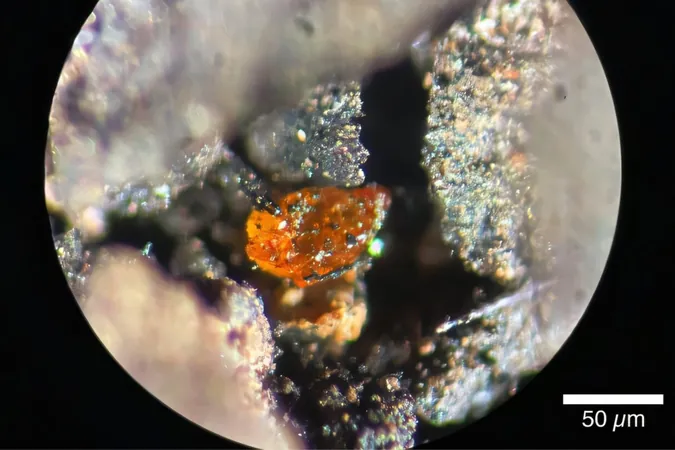
Get Ready for a Dazzling Display: Northern Taurid Meteor Shower Peaks This Week!
2024-11-12
Author: Ming
Are you ready to witness a spectacular celestial event? Stargazers who missed the excitement of the Southern Taurid meteor shower have another chance this week as the Northern Taurids hit their peak activity! Known for their stunning fireballs, this meteor shower promises to light up the night sky.
Unlike the fast-paced Orionids, which speed across the sky at an astonishing 148,000 miles per hour, the Taurids are notably slower, traveling at a speed of approximately 65,000 miles per hour. This slower velocity contributes to their reputation for producing bright, eye-catching fireballs rather than a high volume of meteors. While they may not capture the same level of attention as the Orionids or the widely celebrated Perseids, the Taurids have their unique charm.
Northern Taurid Schedule: When to Look Up
The Northern Taurid meteor shower can be seen wherever the constellation Taurus is visible, typically from late September through early November. While the Southern Taurids reached their peak last week, the Northern branch will be most active on Monday and Tuesday of this week, between October 13 and December 2.
Though their numbers may be modest—averaging only five meteors per hour during peak times—the Taurids uniquely stand out for their size and brilliance. This year, astronomers anticipate an increased frequency of spectacular fireball events, making this a must-see for both seasoned astronomers and curious skywatchers alike.
Best Viewing Locations and Times
To catch the Northern Taurids in action, find a dark location away from city lights. The best time for viewing is after midnight and before dawn when the moon’s brightness wanes, and Taurus, the meteor's point of origin, is high in the sky.
If you need help locating Taurus, look for the prominent red star Aldebaran and the star cluster Pleiades, which appear in the northeastern section of the Orion constellation. The best part? You don’t need fancy equipment! Just a comfy chair, some warm clothes, and a bit of patience will do the trick.
What Causes These Stunning Meteor Showers?
Meteor showers are born from the debris trails left by comets and other celestial bodies orbiting the sun. When Earth passes through these trails, the meteoroids collide with our atmosphere at high speeds, creating fiery streaks of light known as meteors or shooting stars.
In the case of the Taurids, astronomers believe the meteors originate from the debris left behind by Encke’s Comet. This intriguing comet, known for its short 3.3-year orbit around the sun, sheds ice and rock into space each time it passes through the inner solar system. This material accumulates into a vast debris cloud, which Earth passes through, resulting in two meteor showers—the Northern and Southern Taurids.
Don’t Miss Out!
Make sure to mark your calendars for Monday and Tuesday night! This week’s Northern Taurid meteor shower is set to be an extraordinary show, providing a perfect opportunity for family outings, romantic dates under the stars, or a solo adventure in the beauty of the night sky. So grab your friends, wrap up warmly, and head out to catch these mesmerizing shooting stars overhead!




 Brasil (PT)
Brasil (PT)
 Canada (EN)
Canada (EN)
 Chile (ES)
Chile (ES)
 España (ES)
España (ES)
 France (FR)
France (FR)
 Hong Kong (EN)
Hong Kong (EN)
 Italia (IT)
Italia (IT)
 日本 (JA)
日本 (JA)
 Magyarország (HU)
Magyarország (HU)
 Norge (NO)
Norge (NO)
 Polska (PL)
Polska (PL)
 Schweiz (DE)
Schweiz (DE)
 Singapore (EN)
Singapore (EN)
 Sverige (SV)
Sverige (SV)
 Suomi (FI)
Suomi (FI)
 Türkiye (TR)
Türkiye (TR)